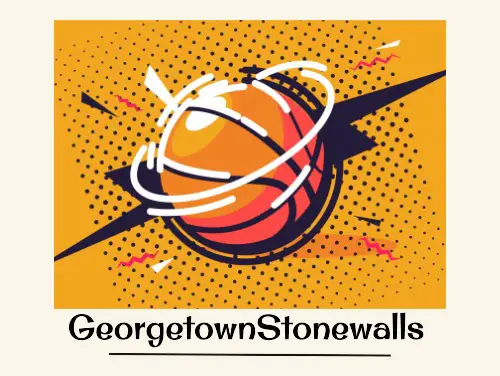There is no minimum height requirement to play basketball. Height can be advantageous, but skill and dedication are crucial.
Basketball is a sport celebrated for its inclusivity, allowing players of various heights and builds to participate and excel. Contrary to some sports where physical attributes might limit participation, basketball emphasizes skill development, teamwork, and strategic play. Successful players range from towering centers to agile guards, proving that height isn’t the sole determinant of basketball prowess.
The sport’s global popularity stems from its accessibility to people of all sizes and its celebration of diverse athletic abilities. Aspiring players should focus on refining their skills, understanding the game, and maintaining physical fitness to thrive on the court. With icons like Spud Webb and Muggsy Bogues, who stood at 5’7″ and 5’3″ respectively, the narrative of basketball is rich with examples of how determination often trumps physical stature.
Height In Professional Basketball
Imagine stepping onto a basketball court surrounded by giants. In professional basketball, height is not just a number; it’s a significant aspect of the game. From towering centers to agile guards, players’ heights can influence their roles and how they navigate through the thrills of the game. Let’s explore the dynamics of height in the world of professional hoops.
Average Heights Across Positions
Professional basketball showcases a fascinating mix of athletes, all varying in height. Typical positions dictate an average height range:
| Position | Average Height |
|---|---|
| Point Guards | 6’2″ |
| Shooting Guards | 6’4″ |
| Small Forwards | 6’7″ |
| Power Forwards | 6’9″ |
| Centers | 7′ |
Note, these heights can vary based on individual team strategies and player skillsets.
Pros And Cons Of Being Tall In The Game
A towering stature comes with its advantages and disadvantages. Here’s a quick look at how being tall impacts a player’s game:
- Pros:
- Better reach for rebounds
- Intimidating defensive presence
- Easier shot-blocking capabilities
- Cons:
- Potential for decreased speed and agility
- Higher risk of certain injuries
- Possible difficulties maintaining endurance
In essence, height can be an asset, but it also demands a high level of skill development to be effective on the court. Pros and cons of a player’s stature introduce unique game strategies and play styles in professional basketball.
Myths About Height And Basketball
Basketball often gets linked with height, but is the court only meant for the tall? While soaring heights might seem advantageous, they don’t paint the full picture of basketball success. Let’s debunk some myths about height and the beloved game of hoops.
The ‘taller Is Better’ Myth
The notion that taller players have a guaranteed edge in basketball is a widespread belief. Many people think that height equals success on the court. Yet, skills like agility, precision, and teamwork weigh just as heavily.
Reality proves that being tall is not the only way to excel in basketball. In fact, many basketball legends weren’t the tallest on the team. These players brought extraordinary skills that overshadowed any centimeters they lacked.
Short Players Who Made Big Impacts
Some of the most motivating stories come from players who weren’t the tallest. These athletes have left giant footprints in the world of basketball. Their legacies stretch beyond their physical stature.
- Muggsy Bogues, who stood at 5’3″, astonished with his impeccable ball-handling and defensive skills.
- Spud Webb, at 5’7″, won an NBA Slam Dunk Contest, proving that vertical leaps aren’t reserved for the tallest players.
- Chris Paul, standing at 6 feet, dominates with his vision and leadership, reinforcing that height is not the sole factor in a player’s influence.
These athletes have proven that height doesn’t limit a player’s impact on the game. Instead, their dedication and skill set wrote their success stories.
Skills Over Size
Skill triumphs size on the basketball court. Many ask, “How tall do you have to be to play basketball?” Yet, legends like Spud Webb and Muggsy Bogues, who stood well below the average height for the sport, have proven that height isn’t everything. So, let’s explore how fundamental skills can overshadow the advantage of height, and the specific training regimens that can help shorter players shine on the basketball court.
Fundamental Skills That Trump Height
Basketball isn’t just about reaching the rim. A strong foundation in key skills can place players of any height at an advantage. Here we detail the critical abilities that can help shorter players excel:
- Ball handling: Superior dribbling can control the game’s pace.
- Shooting accuracy: Precision can outscore height every time.
- Speed and agility: Quick movements can outmaneuver taller opponents.
- Basketball IQ: Understanding the game can lead to smarter plays.
- Stamina: Endurance allows players to maintain a high-level performance.
Training Regimens For Shorter Players
| Exercise | Benefit |
|---|---|
| Dribble Drills | Increases ball-handling skills |
| Shooting Practice | Improves accuracy and shot consistency |
| Agility Ladder | Boosts footwork and coordination |
| Plyometric Exercises | Develops explosive power and speed |
| Endurance Training | Builds stamina for sustained effort |
Intensive training can give smaller players the edge they need to compete at high levels. Incorporating these exercises into a regular routine not only improves effectiveness on the court but also demonstrates that size isn’t the end-all be-all in basketball.

Success Stories Of ‘undersized’ Players
The game of basketball often highlights towering giants who dominate the court. Yet, some players defy these height expectations with remarkable success. Let’s explore the inspiring journeys of ‘undersized’ basketball stars who left an indelible mark on the game.
Historical Perspectives On Player Height
Traditionally, basketball favored the tall. Past decades emphasized height as a key ingredient for victory. Players like George Mikan, Bill Russell, and Wilt Chamberlain stood as titans. Their size was synonymous with success. Despite this, several shorter players carved out legendary careers.
- Muggsy Bogues – At 5’3″, Bogues became the shortest player in NBA history. His career spanned 14 seasons.
- Earl Boykins – Standing 5’5″, Boykins awed fans with his scoring ability and heart over height attitude.
- Spud Webb – Webb, at 5’7″, won the NBA Slam Dunk Contest in 1986, defying gravity and expectations.
These historical figures paved the way for shorter players to dream of pro basketball careers.
Modern-day Examples And Career Highlights
The modern era continues to witness ‘undersized’ players achieving remarkable feats in basketball. They excel through sheer skill, speed, and determination.
Chris Clemons and Isaiah Thomas have become household names despite not fitting the traditional mold. Clemons, at 5’9″, showcased incredible scoring prowess during his debut season. Isaiah Thomas, at 5’9″, became an NBA All-Star and led his team to the playoffs.
| Player | Height | Notable Achievement |
|---|---|---|
| Chris Clemons | 5’9″ | Scored 41 points in a single game |
| Isaiah Thomas | 5’9″ | Two-time NBA All-Star |
| Nate Robinson | 5’9″ | Three-time Slam Dunk Contest champion |
Their career highlights signal a changing tide. Size remains an advantage, but heart and hustle can level the playing field. Players like Thomas and Robinson inspire others to aim high, regardless of their stature.
Navigating The Youth And Amateur Scene
When it comes to youth and amateur basketball, height isn’t the only key to success. Skills, determination, and the right environment matter too. Let’s explore how young players can thrive no matter their height.
Choosing The Right League
Finding a league that matches your child’s age and skill level is crucial. Look for leagues that emphasize development and enjoyment. Here’s how:
- Research local programs: Find options in your community.
- Consider the focus: Some leagues prioritize competition, while others stress learning and fun.
- Ask about coaching: Good coaches will focus on improving all players regardless of height.
Guidance For Young Players Not Meeting Typical Height Expectations
Players who may not be as tall can still make a big impact on the court:
- Develop diverse skills: Becoming a versatile player is key.
- Focus on fundamentals: Mastering basics like dribbling and shooting matters.
- Play with confidence: Self-belief goes a long way in basketball.
Remember, stars like Allen Iverson and Spud Webb proved that talent shines at any size.
The Future Of Basketball
The future of basketball brims with excitement and evolving prospects, as the sport sees changes that go beyond the heights of its players. Openness to diverse player physiques and strategic novelties are charting a new course for basketball, inviting athletes of varied statures to make their mark.
Evolving Attitudes Towards Player Physique
The stereotype of basketball being a tall player’s domain is fading. Skills and agility now weigh as heavily as height in a player’s success. Coaches and scouts seek a balance of attributes:
- Ball handling and passing skills
- Sharp shooting ability, regardless of distance
- Defensive agility and instincts
- Strength and conditioning to endure the game’s pace
Teams celebrate the diversity in player builds, finding value in unique talents.
How The Game Is Changing
New strategies challenge traditional playstyles. Here’s how:
| Traditional Focus | Modern Trends |
|---|---|
| Height-centric player selection | Varied player profiles emerging |
| Conventional position roles | Positions becoming fluid and adaptable |
| Inside-the-paint scoring | Increased reliance on three-pointers |
| Individual star dependency | Greater emphasis on team dynamics and collaboration |
These transformations ensure that basketball evolves into a sport where height is an asset, but not a necessity.

Frequently Asked Questions On How Tall Do You Have To Be To Play Basketball
Is There A Height Requirement For Basketball?
No, basketball does not have a official height requirement. Players of all statures can compete effectively with skill and agility. However, professional basketball players often trend taller, as height can be an advantage in the sport.
What Is The Average Height Of Nba Players?
The average height in the NBA is around 6 feet 7 inches. This has remained relatively consistent over the years, with variations mostly due to different player positions. Guards tend to be shorter, while centers are usually taller.
Can Short Players Succeed In Basketball?
Absolutely, short players can excel in basketball with qualities like speed, skill, and strategic gameplay. Notable NBA stars under 6 feet, such as Allen Iverson and Chris Paul, have demonstrated exceptional talent and have had successful careers.
How Does Height Impact A Basketball Player’s Role?
Height can influence a player’s position and role on the court. Taller players often play near the basket as centers or forwards, utilizing their size for defense and rebounds. Shorter players typically handle the ball more as guards, focusing on passing and quick maneuvers.
Conclusion
Height in basketball, while advantageous, is not a prerequisite for success. Players of various statures have excelled through skill, speed, and strategy. It’s your passion, dedication, and relentless improvement that will truly elevate your game. Dream big, train hard, and remember that basketball is for everyone who loves the sport.

